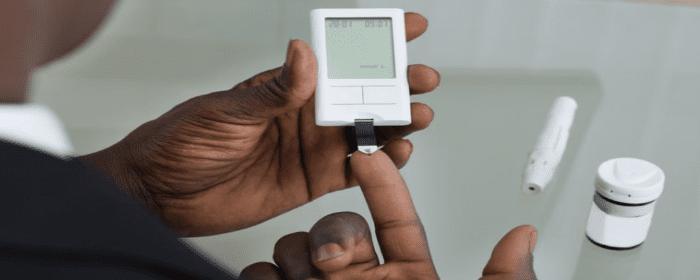
by admin | Feb 28, 2019 | Health Awareness
We’re told since childhood that we need vitamins to stay strong, but just how significant a role does each nutrient really play in our wellness? Specifically, you may have heard about the importance of getting ample vitamin C to fight off illness, but what does it really do to keep us healthy? Let’s take a closer look at the significance of vitamin C, and how you can make sure you’re getting enough.
Why Our Health Depends on Vitamin C
Vitamin C supports a number of key bodily functions. It helps to produce L-carnitine and some neurotransmitters, and it also has antioxidant activity which could help to decrease the risk of certain cancers. It also aids in iron absorption.
Moreover, vitamin C plays an important role in collagen production. Collagen is found in connective tissue and is the most abundant protein found in mammals. It makes up tendons, ligaments, cartilage, skin, bones, blood vessels, and more. Without enough vitamin C, collagen production may become compromised. This means wounds may take longer to heal, as research shows vitamin C can help form scar tissue.
Researchers have also found that vitamin C can attack drug-resistant strains of tuberculosis and that in general, people with sufficient levels of the vitamin may be more likely to fight off infections than those without. Additionally, individuals who contract colds and have enough of the nutrient may experience shorter periods of illness and milder symptoms. High doses have even been proven to benefit cancer patients by stopping the growth and potentially even killing off cancer cells.
Without enough vitamin C, you may notice symptoms of a deficiency, including nosebleeds, a slowed metabolism, weakened tooth enamel, painful joints, bleeding gums, anemia, easy bruising, and dry or splitting hair. A severe deficiency is known as scurvy, but this condition is typically experienced only by malnourished, older adults.
How to Get Plenty of Vitamin C
Vitamins can either be fat soluble or water soluble. Vitamin C falls into the latter category, which means it isn’t stored by the body, and any excess amount will be released through urine. Because we don’t build up a supply of it, it’s critically important that we get enough through diet.
The daily recommended amount for vitamin C is 65 to 90 mg for adults, but these levels may be different for women who are pregnant or breastfeeding. To take in more vitamin C through your diet, snack on fruits like cantaloupe, pineapple, strawberries, citrus fruits, and watermelon. Veggies like broccoli, Brussels sprouts, cauliflower, peppers, spinach, and sweet potatoes are also rich in the nutrient. If you’re concerned about your intake, consider speaking with your doctor to determine whether you might be a good candidate for a daily supplement.

by admin | Jan 31, 2019 | Health Awareness
Potassium is a mineral which plays many important roles in the body. It supports both cellular and electrical function, and is one of the blood minerals called an electrolyte, meaning that it carries a small electrical charge. The body uses this electricity to manage processes such as fluid balance, muscle contractions, and nerve signals. Thus, when your body has too much or too little potassium, it can alter many critical functions.
According to research, a potassium-rich diet can reduce blood pressure
and water retention. It may also prevent stroke, osteoporosis, and
kidney stones. In addition to keeping these conditions at bay, having optimal
potassium levels also supports your overall wellbeing. When potassium levels
dip too low, a condition called hypokalemia
can set in. It’s characterized by muscular cramping or weakness, depression,
insomnia, and cardiovascular complications, including abnormal heart rhythm.
With that said, it’s also possible to get too much potassium, which is why most
medical experts agree that getting the mineral through diet is the safest way
to maintain optimal levels.
Unless you have a known kidney disorder or another condition
which would cause you to limit your potassium consumption, you can aim for up
to 4,700
milligrams per day of the mineral. Below, we’ve compiled a list of
potassium-rich foods to start incorporating into your diet.
7 Foods High in Potassium
Beet Greens: When cooked, a 100-gram serving of beet greens has over 900 mg of potassium! When they’re in season (June through October), try sautéed beets with a little garlic and olive oil.
White Potatoes: Oftentimes, starchy foods like white potatoes get a bad reputation. In reality, white potatoes are high in nutrients, and 3.5 ounces of baked white potatoes contain 544 mg of potassium.
Pinto Beans: Versatile pinto beans can be added to chili, served as a side dish, or incorporated into salads and burritos. And, with nearly 650 mg, they pack a powerful punch of potassium.
Greens: There’s a reason kale is hailed as a superfood. As one of the most nutrient-dense but low-calorie foods on the planet, it is an excellent source of vitamins C and K, antioxidants, and has nearly 450 mg of potassium. Spinach, too, is a strong contender, and a 100-gram serving has 466 mg of the mineral when cooked.
Salmon: Fish like wild salmon and halibut are loaded with potassium, and most will satisfy upwards of 10% of your daily recommended intake. They’re also rich in vitamin D and omega-3 fatty acids.
Avocado: Another superfood, avocados are packed with fiber, heart-healthy fatty acids, and potassium. A single serving meets 14% of your daily recommended value for potassium, too.
Bananas: The yellow fruit has rightfully earned its longstanding reputation as a potassium-rich food. Yet, with roughly 350 mg per serving, all of the other foods on this list actually contain more potassium than bananas!

by admin | Jan 28, 2019 | Health Awareness
From family doctors to internists, there are many types of
physicians that patients see regularly. Yet, one often overlooked discipline in
the medical world is functional medicine. Functional medical professionals
still receive formal education and clinical training, but their approach is
different from that of most other doctors. Find out what functional medicine
doctors do, and whether working with one could be the right choice for you,
below.
What Do They Do?
Functional medicine doctors use a systems-oriented approach
to address underlying causes of diseases, engaging both patient and
practitioner in a therapeutic partnership. In other words, these doctors take
more of a patient-centered approach to treat the entire person – not just their
isolated symptoms. These physicians are well-versed on the complex interplay
among genetic, environmental, and lifestyle factors that impact long-term
health, which also play a role in many underlying health issues and chronic
diseases.
What Are the Benefits of Working With One?
Working with a functional medicine doctor gives patients a
unique advantage. They incorporate the knowledge of how various factors can
influence disease emergence and progression with advancements in science to
take a powerful, all-encompassing approach to treatment. In doing so, they
achieve the highest expression of health, and treat patients not just
retroactively by assessing symptoms that have already emerged, but also
proactively. Functional medicine doctors can therefore offer predictive
guidance to empower patients in their quest for improved and sustained
wellness.
Moreover, patients who are treated by functional medicine
doctors receive tailored services and treatments. For instance, these
professionals may recommend a customized supplement program based on a thorough
nutrient assessment. With the knowledge that lifestyle elements like nutrition
and exercise are uniquely linked to internal physiological factors, they can
help patients seek the dynamic balance that works best to support their version
of ideal health.
How Do They Help Certain Populations?
Individuals with illnesses like chronic fatigue syndrome, lupus, and similar chronic ailments may find themselves working with doctors who can offer relief for symptoms, without making any real improvements in terms of treating what could be contributing to the condition in the first place. In patients who suffer from a chronic condition, and especially those with neurodegenerative disorders, issues such as gastrointestinal dysbiosis – the imbalance of gut flora – may be an underlying contributor. Research shows gastrointestinal dysbiosis is associated with changes in immune responses, which further supports internal medicine doctors’ stance that our bodily systems are inextricably linked.
Of course, gastrointestinal issues are only one example of
an underlying condition that a functional medicine doctor might uncover. Factors
like exposure to toxins, including heavy metals, could be wreaking havoc on
your internal systems, unbeknownst to you (or your existing medical team). If
you’re living with a chronic condition or symptom like persistent pain, there
is a whole host of factors that could be acting as a barrier against your
healthiest self. And, the only way to discover them is to use the comprehensive
approach applied by functional medicine doctors. If you’re interested in
finding one of these professionals in your area, visit the Institute for
Functional Medicine® here and click “Find a
Practitioner” at the top of the page.

by admin | Jan 21, 2019 | Health Awareness
If you’re among the 40% of the U.S. population taking
multivitamins each day, you may already have found a daily supplement you like
and plan to stick with. Indeed, you’re in good company – with the body
requiring upwards of 40 essential vitamins and minerals to function
optimally every day, it’s certainly not easy to get all of the nutrients we
need from diet alone. In addition to helping us fill nutritional gaps in our
diet, taking multivitamins may also have long-term health benefits: one study
shows men and women who took daily vitamins greatly reduced their risk of a
first heart attack.
With that said, it’s important to remember that not all
multivitamins are created equal. As with any supplement, you should consider a
few key factors before taking a multivitamin. Discover how to choose the best
option for your needs with the helpful guide below.
Look for the Seal
First and foremost, any vitamin brand you consider should
feature a seal from a third-party certifier. This might include NSF
International, USP, or UL. Keep in mind that while a seal demonstrates the
brand’s commitment to industry best practices, the absence of the seal doesn’t
necessarily mean that the product is of poor quality. Instead, the seal
verifies that the vitamins are manufactured in alignment with that inspection
agency’s standards. Still, this bit of assurance can provide peace of mind –
especially if you’re taking the same vitamin every day.
Consider Your Needs
If you’ve ever stumbled upon men’s and women’s multivitamins
and wondered why they’re separated by sex, there’s a good reason for this: men
and women have different nutritional needs. For instance, women can benefit
from added
calcium, as the nutrient can help prevent against osteoporosis.
For men, on the other hand, too much calcium can actually be harmful. Women
also need more iron then men, while men should avoid it in excess as it can
cause dangerous deposits throughout the body’s critical organs.
In addition to these gender-based differences, your body’s
nutrient needs may vary by age and dietary practices. A nutritionist may be
able to help you pinpoint possible deficiencies more precisely, and you may
also wish to speak with your physician to determine whether there are any
specific needs to consider from a medical standpoint.
Read the Ingredients
Next time you shop for multivitamins, take a look at the
labels and read the ingredient list. A good multivitamin will contain vitamin
C, calcium, iron, magnesium,
and potassium. It should also have vitamins B6 and B12, D2 or D3, A, E, and K,
as well as the following additional nutrients: thiamin, riboflavin, niacin,
iodine, borate, molybdenum, folic acid, pantothenic acid, biotin, selenium, and
zinc.
Check for Appropriate Values
While you’re reviewing the ingredients, browse through the
list of nutrients and look for appropriate daily values. While certain
nutrients, including calcium, cannot be provided in pill form at 100 percent,
many can. Pay special attention to the daily values of fat-soluble vitamins, or
those which your body stores, instead of expelling through urine as is the case
with water-soluble vitamins. These can be toxic if taken in excess and should
not exceed a daily value of 100%. Some fat-soluble vitamins include A, D, E,
and K.
Remember that while taking a daily multivitamin is a good practice,
it won’t compensate for unhealthy habits. Supplements, as their name suggests,
are only meant to fill voids that can be left in even the healthiest diets. Fill
your diet primarily with whole foods and try to exercise most days of the week in
addition to taking a multivitamin for the most effective and comprehensive approach.
Always speak to your physician first before implementing a new diet and
exercise plan and to also help determine which multivitamin is right for you.

by admin | Jan 17, 2019 | Diabetes, Health Awareness
For people with diabetes or pre-diabetes, making healthy
dietary choices is an important aspect of disease management. In particular,
patients should avoid foods that are known to spike blood sugar to keep their
levels within a healthy range. Even for individuals who aren’t diabetic,
limiting or avoiding these foods can help to prevent against serious health
issues, including insulin resistance, obesity, and heart disease. Discover some
of the worst culprits behind elevated blood sugar below.
White Grain Products
While limiting your consumption of grain products may have
certain health benefits, you don’t have to skip rice and bread products altogether.
Simply steer clear of white rice and bread, and opt for whole-grain varieties
instead. In particular, eating white
rice regularly has been associated with an increased risk of type 2
diabetes. This could be a result of the food’s lack of fiber, which helps to
regulate blood sugar levels. White bread, too, is linked to a higher risk of
type 2 diabetes and heart disease.
It’s made from refined flour, which is digested too quickly and can therefore
spike blood sugar.
Red Meat
Too much red meat increases the likelihood of developing
diabetes, especially when it’s processed. Even just two slices of bacon or one
hot dog eaten daily can increase a person’s risk of type 2 diabetes by as much
as 51%.
Red meat has also been linked to higher levels of colorectal cancer and cardiovascular
disease. Researchers suspect that while the saturated fat found in red meat is
one part of the problem, the high level of sodium, which can increase blood
pressure and create insulin resistance, is also to blame.
Fast Food
Fried, greasy foods may look appetizing, but they’re among
the worst offenders on this list. Most varieties have soaring calorie, fat, and
salt counts, all of which spike blood sugar. Salty fast food is particularly
dangerous, as it can increase blood pressure. Because diabetes patients already
face a higher risk of heart
disease, controlling blood pressure is critically important to their health.
Packaged Snacks
Commercially prepared baked goods and other packaged snacks
should be avoided, or at least eaten in moderation. Many of these options have
harmful additives and are high in trans fats, which can impact your cholesterol
and lead to inflammation. Snacking on whole foods, such as a handful of
almonds, vegetable sticks, roasted chick peas, and hard-boiled eggs will
deliver more nutritious benefits in between meals.
Whole-Fat Dairy
As mentioned above, saturated fat can lead to insulin
resistance, or the body’s inability to use insulin for energy. When this
happens, insulin builds up in the blood, leading to higher blood sugar levels.
While not all dairy contributes to this issue, whole milk and other full-fat
dairy products are particularly high in saturated fats. For this reason,
diabetics should choose reduced or nonfat dairy products, including yogurts and
cheeses, whenever possible.

by admin | Jan 10, 2019 | Health Awareness, Multiple Sclerosis
The complex interplay between nutrition and health is still being researched by experts. In many cases, there are already established links between certain foods and undesirable health outcomes. For example, recent dietary guidelines recommend limiting added sugars to 10% of your daily calories or less, as they’re associated with an increased risk of heart disease. For individuals with chronic diseases, it’s perhaps even more important to consider the ways food can impact health.
For those with Multiple Sclerosis (MS),
optimizing your diet means not only filling your plate with healthy foods, but
also avoiding or limiting foods known to exacerbate symptoms. Research shows
that in particular, patients with MS have been able to improve their quality of
life by making specific tweaks
to their diet. Discover which foods
you should discuss with your doctor as a means of controlling your symptoms.
Fats
Saturated fats are commonly found in animal products,
including red meat. These foods aren’t entirely void of nutritious qualities –
after all, they can be rich sources of protein. Yet, their high concentration
of saturated fats presents issues, as they could raise “bad” cholesterol
levels. This is especially of concern for MS patients, who face a higher risk
for heart problems than people without MS.
Trans fats, too, are considered dangerous. Sometimes labeled
as “partially hydrogenated oils,” these fats are known to increase
inflammation, particularly within the blood vessels. This, too, increases the
risk of cardiovascular issues. Steer clear of packaged cookies, crackers, and dessert
items, or at the very least, be sure to enjoy them sparingly.
Sugar
We mentioned briefly above that added sugars are notorious
for their adverse health effects. Not only does excess
sugar lead to weight gain, but it also produces an inflammatory effect
which can intensify MS symptoms. Natural sugars, including those found in
fruits, don’t have the same effect, so feel free to snack on those instead.
Sodium
Added salt presents a number of issues for MS patients. In
general, higher sodium intake is associated with increased
disease activity in MS, and has been found to increase likelihood of
relapse and development of lesions. Sodium intake and blood pressure are also
related, and because high blood pressure can decrease life expectancy in MS
patients, added salt should be consumed at a minimum.
Dairy
Like meat, cow’s milk and other full-fat dairy products are high
in saturated fats. Besides the fat content, however, specific proteins in the
milk could cause trouble for people with MS. These agents could produce a
reaction in multiple sclerosis sufferers, but research shows
the link isn’t very strong. However, it may be worth replacing cow’s milk and
other full-fat dairy products with alternatives to see if it alleviates your
symptoms. Consider exploring options such as soy, almond, or even camel’s
milk.
Gluten
Gluten is primarily a concern for people with celiac
disease, which is characterized by an allergy to the protein found in rye,
wheat, and barley. Consuming gluten can cause intestinal damage in people with
the allergy. Because MS patients have a higher incidence
of celiac disease than the general population, it may be useful to closely
monitor your body’s reaction to consuming bread, cereal, pasta, and other foods
with gluten. While there is currently no evidence suggesting avoidance of
gluten can alleviate MS symptoms in patients who don’t have celiac disease, it never
hurts to bring up any food-related concerns you may have with your physician.







 St. Petersburg, Florida
St. Petersburg, Florida
